CAA News Today
CAA 2017 Convocation, President’s Address: “Art Matters”
posted by Suzanne Preston Blier, President, the College Art Associatio — February 24, 2017
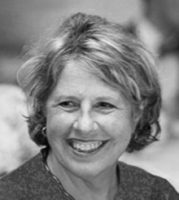 Art Matters. Art has always mattered. Whether we are art scholars or artists, critics or designers, gallery goers or museum professionals, art matters to all of us a great deal. Equally importantly, art matters – critically – to the societies in which we live and work. Fifty years ago this week (February 14,1967) as Aretha Franklin recorded her soon to become hit song, Respect, and Martin Luther King, Jr. prepared to denounce the Vietnam War in an April 4th New York city religious service, Faith Ringgold was creating her celebrated Black Light series, addressing the impact of race riots and other issues of the era. More recently, in 1990 when South African Apartheid finally ended, and Nelson Mandela and other political prisoners were released from incarceration, the important work of South African artists – black and white, men and women –in bringing inequality and racism into public view began to be broadly acknowledged. Within the last few weeks, the Museum of Modern Art began a project to rehang works by artists from majority-Muslim nations facing travel bans to this country. Art matters.
Art Matters. Art has always mattered. Whether we are art scholars or artists, critics or designers, gallery goers or museum professionals, art matters to all of us a great deal. Equally importantly, art matters – critically – to the societies in which we live and work. Fifty years ago this week (February 14,1967) as Aretha Franklin recorded her soon to become hit song, Respect, and Martin Luther King, Jr. prepared to denounce the Vietnam War in an April 4th New York city religious service, Faith Ringgold was creating her celebrated Black Light series, addressing the impact of race riots and other issues of the era. More recently, in 1990 when South African Apartheid finally ended, and Nelson Mandela and other political prisoners were released from incarceration, the important work of South African artists – black and white, men and women –in bringing inequality and racism into public view began to be broadly acknowledged. Within the last few weeks, the Museum of Modern Art began a project to rehang works by artists from majority-Muslim nations facing travel bans to this country. Art matters.
As the one hundred and fifth College Art Association’s Annual Conference gets underway, it is imperative that we reflect on these and related art issues, on the close connections between art making and activism and the vital roles that artists, art scholars and other professionals play in tackling critical issues of the day, whether it be war, racism, sexism, or other forms of discrimination and ethical derogation. Art Matters. It serves as a vital site not only of engagement and resistance, advocacy and education, problem solving and invention, but also as a vital means of opening up and re-envisioning the world around us. Art matters to us both as individuals and as part of the societies in which we live and work. In an era of increasing attacks not only on the humanities, social sciences, and sciences, but also on the arts, the importance of CAA as the leading organization that brings together practitioners and scholars within the same broad umbrella is all the more important. CAA offers a unique platform to reengage at the local, national, and international level. The so-called STEM fields (science, technology, engineering and math) are important, but they do not overshadow the arts and humanities. Indeed, throughout history, each has often enhanced the other.
Arts Matter. Yet I have a confession: there was a key moment in my life when I did not feel this. It was the summer after my Freshman year in college at the University of Vermont. I was working in the Senate when one bleak morning I found myself in tears standing in Dupont Circle watching as Bobby Kennedy’s body arrived here in the hearse after his assassination. Martin Luther King Jr. had been shot a few months earlier. I returned to college that Fall but concluded soon after that art history and studio art were simply not enough. I quit college at the end of that year to join the Peace Corps. It was here, in Africa, where I first realized politics and art were integrally co-joined. Every book I read on African art was worse than the last. The field needed a correction, art history needed a correction, and after my two-year term ended, I returned home to finish my degree and make plans to attend graduate school with a focus on African art.
CAA then, as today, was a big deal. Elation and genuine fear were my initial emotions when my first CAA paper proposal was accepted– on a politically fraught panel addressing Semiotics and Art chaired by Henri Zerner. Much later we would become colleagues. These kinds of connections are part of what makes CAA so important. For me, a timely Art Bulletin article no doubt helped with tenure. But well before then I felt it was important to engage more formally with CAA – as much for African Art as anything else. It was for that reason that I ran for the CAA Board of Directors – and years later ran a second time. When I was a graduate student, many still believed that Africa had no arts outside of Egypt, and Egypt itself was part of a strange exo-African nether world somewhere between Mesopotamia and Greece. African art, if it was considered art at all, was assumed to be primitive. CAA for me was where the real political work began, through CAA board connections, I and others persuaded the editor at Abrams to drop the “Primitive Art” chapter from Janson’s best-selling History of Art textbook. In due course, African and African diaspora arts, and those who made and studied them, began reshaping not only art departments around the country, but also exhibitions, major journals, book publications and key prizes within CAA and other organizations. It was CAA that played a central and ongoing role in this.
What had begun for me at CAA as an engagement about my field, soon blossomed into other issues – open access to museum collections in publishing for example. When I was a board member initially, one of our group began to work with the Metropolitan Museum to make their art photographs accessible on the web. This effort continued and on February 7th, one week ago, the Metropolitan announced that all images of public-domain works in the Met collection will now be available under Creative Commons. This is a huge step forward that will benefit us all. So too has been CAA’s path-forging efforts on Fair Use one of our most important and indeed revolutionary undertakings, for which I and others already are seeing considerable savings in terms of finances and time.
Art Matters. CAA members working together have achieved important ends. But we can and must do more. Art access inequality is not the only issue to attend to. Access to quality higher education is a vital concern for both us and our students, as are questions of student loan fees and affordability, along with the ability of professionals in our field to gain a viable living and secure employment in educational and art-linked institutions. I benefitted from my undergraduate training at a then inexpensive public university; my graduate school education would not have been possible without affordable student loans. I could not have written my Ph.D. without a government funded Fulbright fellowship. For me and many others, book projects would not have been completed without an NEH grant or others at tax supported institutions such as CASVA, the Clark, and the Getty. Museum exhibitions funded by both NEA and NEH are critical to what we do, and these same museums bring in billions of dollars in revenue to local cities and towns.
Art matters. And this is where CAA is critical as an organization, focusing with a new sense of urgency not only on the longstanding programs where we have excelled but also speaking out on core issues that are important to all of us – such as diversity, equal access, and sustainability. Social Activism is a key part of CAA’s Strategic Plan now. As we move forward, changes in CAA that are already underway and will become more evident shortly will help make our organization even stronger and more engaged – from the reenergized annual conference, to a far more dynamic web presence, from larger roles for our affiliated societies, to added benefits that will help members in their professional and personal loves. Art Matters. It matters to us. It matters to the communities and broader societies in which we live and work.
Suzanne Preston Blier

2016 Recipients of CAA’s Professional Development Fellowships
posted by Christopher Howard — January 23, 2017
CAA has awarded two 2016 Professional-Development Fellowships—one in visual art and one in art history—to graduate students in MFA and PhD programs across the United States. In addition, CAA has named one honorable mention in art history and two in visual art. The fellows and honorable mentions also receive a complimentary one-year CAA membership and free registration for the 2017 Annual Conference in New York.
Accepting the $10,000 fellowship in visual art is Daniel Seth Krauss, an MFA student in photography in the Tyler School of Art at Temple University in Philadelphia, Pennsylvania. The recipient of the $10,000 fellowship in art history is Sara Blaylock, a doctoral candidate in visual studies at the University of California, Santa Cruz.
The honorable mention for art history goes to Lex Lancaster, a PhD student at the University of Wisconsin, Madison. The two honorable mentions in visual art are Allison Rose Craver, an MFA candidate at Ohio State University in Columbus, and Andrew Jilka, an MFA student at the School of Visual Arts in New York.
Suzanne Preston Blier, president of the CAA Board of Directors, will formally recognize the two fellows and three honorable mentions at the 105th Annual Conference during Convocation, taking place on Wednesday, February 15, 2017, at the New York Hilton Midtown.
CAA’s fellowship program supports promising artists and art historians who are enrolled in MFA and PhD programs nationwide. Awards are intended to help them with various aspects of their work, whether for job-search expenses or purchasing materials for the studio. CAA believes a grant of this kind, without contingencies, can best facilitate the transition between graduate studies and professional careers. The program is open to all eligible graduate students in the visual arts and art history. Applications for the 2017 fellowship cycle will open in the late spring.
FELLOW IN VISUAL ART
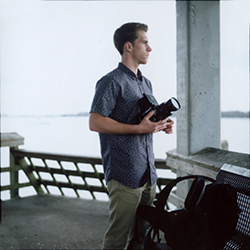 Daniel Seth Kraus
Daniel Seth Kraus
Daniel Seth Kraus‘s work blends historical research with photographic practice to deepen our understanding of people and places. Currently his research investigates faith and work in the American South. Kraus’s work has been featured in numerous print and online publications, including Fraction Magazine, SeeSaw Magazine, Oxford American, and Aint Bad Magazine. His photographs have been exhibited in national and international juried exhibitions, including one at the Morris Museum of Art in Augusta, Georgia. He earned a BFA in photography and a BA in history from the University of North Florida in Jacksonville and is pursuing a MFA in photography at the Tyler School of Art at Temple University in Philadelphia, Pennsylvania.
FELLOW IN ART HISTORY
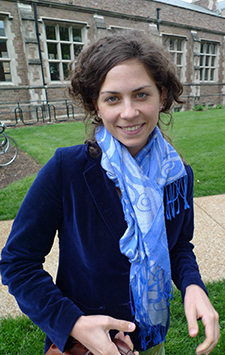 Sara Blaylock
Sara Blaylock
Sara Blaylock will complete her PhD in visual studies at the University of California, Santa Cruz, in spring 2017. To date, the bulk of her research has concerned the experimental film, art, and visual culture of the German Democratic Republic during the 1980s. Her dissertation, “Magnitudes of Dissent: Art from the East German Margins,” focuses on how photography and film, body-based practices, print media, and galleries addressed issues of representation, performativity, and collectivity. It argues that experimental practice in a 1980s GDR was not only an antidote for but also an interpretation of a weakening state—a foil and a mirror to official culture.
Blaylock’s dissertation research has been supported by the German Academic Exchange Service and the Rosa Luxemburg Foundation, as well as by numerous grants from the University of California, Santa Cruz. She has published in numerous academic forums. Most recently, an article appeared in Gradhiva, a French-language journal of art history and anthropology, and Blaylock contributed an essay in both German and English to the catalogue for the exhibition Gegenstimmen. Kunst in der DDR 1976–1989 [Voices of Dissent: Art in the GDR 1976–1989], held at the Martin-Gropius-Bau in Berlin. Another article, “Bringing the War Home to the United States and East Germany: In the Year of the Pig and Pilots in Pajamas,” will appear in Cinema Journal later this year.
Blaylock was recently invited to codirect the International Association for Visual Culture, a scholarly organization that encourages inquiry and debate within the field and that advocates the critical and theoretical expansion of visual-culture studies in academic and artistic venues. She looks forward to helping to advance and strengthen the association’s vision.
HONORABLE MENTIONS IN VISUAL ART AND ART HISTORY
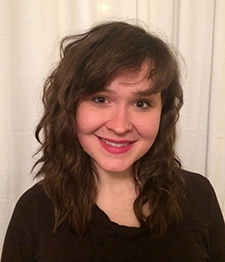 Allison Rose Craver
Allison Rose Craver
Allison Rose Craver will complete her MFA, with a concentration in ceramics, at Ohio State University in in Columbus in May 2017. Craver grew up in East Aurora, New York, and earned a BFA in 2010 from New York State College of Ceramics at Alfred University in Alfred. A year later she studied as a special student at the University of Wisconsin, Madison. Craver has shown her work nationally, including exhibitions at the Archie Bray Foundation for the Ceramic Arts in Helena, Montana, and the Arrowmont School of Arts and Crafts in Gatlinburg, Tennessee. In 2014 she was invited to demonstrate in the Process Room at the annual National Council on Education for the Ceramic Arts conference in Milwaukee. Craver’s work is process driven, using ceramics materials in conjunction with fiber and found objects to explore the nature of care and work.
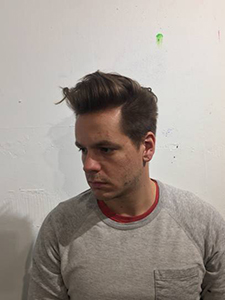 Andrew Jilka
Andrew Jilka
Andrew Jilka was born in in 1986 to a working-class home in Salina, Kansas. The son of a bus driver and a lunch lady, Jilka has been employed as a fast-food worker, a cigarette warehouse stocker, a furniture deliveryman, a Hewlett-Packard call-center representative, a bartender, and later an assistant to the artist Tom Sachs. After selling his Camaro, he enrolled at the University of Kansas in Lawrence, where he received a BFA in printmaking in 2009, as well as a scholarship to study printmaking at Hongik University in Seoul, Korea. Jilka’s work is greatly influenced by the instabilities and anxieties of his Midwestern upbringing. His painting is an attempt to reconcile the “high” of the history and lineage of contemporary painting with the Walmart culture he was raised in. Jilka approaches painting with both the deference of Brahms and the irreverence of the Ramones—and perhaps a touch of Taylor Swift. His work has been shown in group and solo exhibitions in Kansas City, Atlanta, New York, and Seoul. He is currently an MFA candidate at the School of Visual Arts in New York.
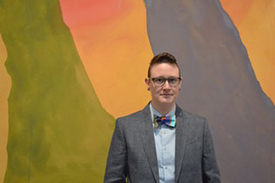 Lex Lancaster
Lex Lancaster
Lex Morgan Lancaster is a PhD candidate in the Department of Art History at the University of Wisconsin, Madison, where they will complete their degree in May 2017. Lancaster’s dissertation, “Dragging Away: Queer Abstraction in Contemporary Art,” investigates abstraction as a tactic of queering in the work of contemporary artists who deploy nonrepresentational form for political ends. Their related article, “Feeling the Grid: Lorna Simpson’s Concrete Abstraction,” was published in ASAP/Journal (2017), and “The Wipe: Sadie Benning’s Queer Abstraction” is forthcoming in Discourse: Journal for Theoretical Studies in Media and Culture. Lancaster is chairing the session on “New Materialisms in Contemporary Art” at CAA’s 2017 Annual Conference in New York.
Lancaster received their BA in art history from Case Western Reserve University in Cleveland, Ohio. They have assisted with exhibitions and public programs at the Cleveland Museum of Art as coordinator of teen programs and intern to the curator of contemporary art, and at the National Gallery of Art in Washington, DC, as a paid summer intern in the Department of Photographs. At the University of Wisconsin, Madison, Lancaster curated the exhibition Our House! Unsettling the Domestic, Queering the Spaces of Home at the Chazen Museum of Art.
2017 Recipients of CAA’s Awards for Distinction
posted by admin — January 09, 2017
CAA announces the recipients of the 2017 Awards for Distinction, which honor the outstanding achievements and accomplishments of individual artists, art historians, authors, conservators, curators, and critics whose efforts transcend their individual disciplines and contribute to the profession as a whole and to the world at large.
CAA will formally recognize the honorees at a special awards ceremony to be held during Convocation at the 105th Annual Conference in New York, on Wednesday, February 15, 2017, at 5:30 PM. See the conference website for full details.
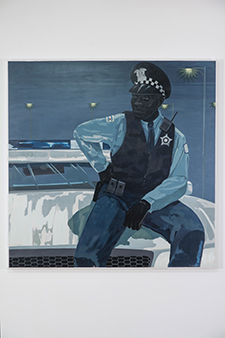
Kerry James Marshall, Untitled (policeman), 2015, acrylic on PVC panel, 60 x 60 inches, 60 9/16 x 60 1/2 x 2 3/4 inches (framed) © Kerry James Marshall. Courtesy of the artist and Jack Shainman Gallery, New York.
Among the winners this year is Kerry James Marshall, recipient of the 2017 CAA Artist Award for Distinguished Body of Work. In his 35-year career painting and making art, Marshall has depicted the African American experience through a medium that has often overlooked the lives of black Americans. His current retrospective at the Met Breuer, titled “Kerry James Marshall: Mastry” (October 25, 2016–January 29, 2017), brings together nearly 80 works by Marshall. Holland Cotter in The New York Times wrote of the show glowingly: “Mr. Marshall has absorbed enough personal history, American history, African-American history and art history to become one of the great history painters of our time.”
Kerry James Marshall biography
Faith Ringgold, the winner of the 2017 CAA Distinguished Artist Award for Lifetime Achievement, is widely considered one of the most influential living African American artists. Born in Harlem in 1930, she is an artist, feminist, activist, and educator who makes use of a variety of media, including painting, quilts, sculpture, performance, and children’s books. Civil Rights, racial justice, feminism, and art history are consistent themes. Ringgold earned BS and MA degrees in art from the City College, the City University of New York, and taught in the NYC public school system for almost twenty years. Since the 1970s Ringgold has been an activist and cofounder of several feminist and antiracist organizations, along with artist Poppy Johnson, art critic Lucy Lippard, and her daughter Michelle Wallace, among others.
Full list of 2017 CAA Awards for Distinction recipients
Charles Rufus Morey Book Award
Kishwar Rizvi
The Transnational Mosque: Architecture and Historical Memory in the Contemporary Middle East
University of North Carolina Press
Alfred H. Barr Jr. Award
Ruth Fine, ed.
Procession: The Art of Norman Lewis
Pennsylvania Academy of the Fine Arts, in association with the University of California Press
Alfred H. Barr Jr. Award for Smaller Museums, Libraries, Collections, and Exhibitions
Carmella Padilla and Barbara Anderson, eds.
A Red Like No Other: How Cochineal Colored the World
Skira Rizzoli, in association with the Museum of International Folk Art
Arthur Kingsley Porter Prize
Christine I. Ho
“The People Eat for Free and the Art of Collective Production in Maoist China”
The Art Bulletin, September 2016
Frank Jewett Mather Award for Art Criticism
Laura U. Marks
Hanan al-Cinema: Affections for the Moving Image
MIT Press
Distinguished Feminist Award
Joan Marter
Art Journal Award
Amy A. DaPonte
“Candida Höfer’s Türken in Deutschland as ‘Counter-publicity’”
Art Journal, Winter 2016
Distinguished Teaching of Art Award
Virginia Derryberry
Distinguished Teaching of Art History Award
Patricia Mainardi
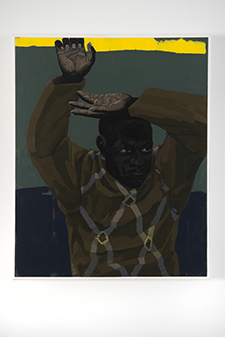
Kerry James Marshall, Untitled (Looking Man), 2016, acrylic on PVC panel, 30 1/2 x 24 1/2 inches, © Kerry James Marshall. Courtesy of the artist and Jack Shainman Gallery, New York.
Artist Award for Distinguished Body of Work
Kerry James Marshall
Distinguished Artist Award for Lifetime Achievement
Faith Ringgold
CAA/American Institute for Conservation Award for Distinction in Scholarship and Conservation
Tom J. S. Learner
Morey and Barr Award Finalists
CAA recognizes the 2017 finalists for the Charles Rufus Morey Book Award and the Alfred H. Barr Jr. Awards for their distinctive achievements:
Charles Rufus Morey Book Award Finalists
- Niall Atkinson, The Noisy Renaissance: Sound, Architecture, and Florentine Urban Life, Pennsylvania State University Press
- Elizabeth Kindall, Geo-Narratives of a Filial Son: The Paintings and Travel Diaries of Huang Xiangjian (1609–1673), Harvard University Asia Center
Alfred H. Barr Jr. Award Finalists
- Helen Molesworth, ed., Kerry James Marshall: Mastry, Museum of Contemporary Art, Chicago, and Skira Rizzoli (honorable mention)
- Barbara Haskell and Harry Cooper, Stuart Davis: In Full Swing, National Gallery of Art, Whitney Museum of American Art, and DelMonico Books
- Alisa LaGamma, Kongo: Power and Majesty, Metropolitan Museum of Art
- Adrian Sudhalter, Dadaglobe Reconstructed, Kunsthaus Zürich and Scheidegger & Spiess
Alfred H. Barr Jr. Award for Smaller Museums, Libraries, Collections, and Exhibitions Finalists
- Andreas Marks, ed., Tōkaidō Texts and Tales: Tōkaidō “gojūsan tsui” by Kuniyoshi, Hiroshige, and Kunisada, University Press of Florida (honorable mention)
- Zdenka Badovinac, Eda Čufer, and Anthony Gardner, eds., NSK from “Kapital” to Capital: Neue Slowenische Kunst—An Event of the Final Decade of Yugoslavia, Moderna galerija and MIT Press
- Geoffrey Batchen, Emanations: The Art of the Cameraless Photograph, Govett-Brewster Art Gallery and DelMonico Books
- Valérie Rousseau, Art Brut in America: The Incursion of Jean Dubuffet, American Folk Art Museum
Contact
For more information on the 2017 Awards for Distinction, please contact Tiffany Dugan, CAA director of programs. Visit the Awards section of the CAA website to read about past recipients.
Top News in 2016 from the Art and Academic Worlds
posted by Christopher Howard — December 28, 2016
As 2016 comes to a close, CAA would like to wish a safe and happy holiday season to its members, subscribers, partners, and other professionals in the visual arts. As we reflect on the past twelve months, the association would like to offer readers a look at the most accessed articles in the weekly CAA News email from the past year.
I Survived My First Year on the Tenure Track, but I’m Ready to Bail!
Now that I’ve survived my first year in a tenure-track position at a small liberal-arts college, all I want to do is curl up in a ball. A nonacademic position is opening up in my hometown. If I got the job, I’d still have adjunct faculty status and be able to supervise grad students. I’d also probably get a 30- to 50-percent salary increase. (Read more from Vitae.)
Advice for the Newly Tenured
I would love to share with you the three biggest mistakes that I observe newly tenured faculty members make. If you know what those mistakes are, then you are not only far less likely to make them, but you also have the opportunity to experiment with new ways of thinking and working that will help you to truly enjoy your tenured status. (Read more from Inside Higher Ed.)
How Many Hours a Week Should Academics Work?
How many hours do you work in a week? Many academics feel overworked and exhausted by their jobs. But there is little evidence that long hours lead to better results, while some research suggests that they may even be counterproductive. (Read more from Times Higher Education.)
The Disappearing Humanities Jobs
The arrival of annual reports on the job market in various humanities fields this year left many graduate students depressed about their prospects and professors worried about the futures of their disciplines. This week, the American Academy of Arts and Sciences released several new collections of data that show that these declines, part of a continuing pattern, are far more dramatic when viewed over a longer time frame. (Read more from Inside Higher Ed.)
Publish or Be Damned
The London office of Yale University Press has been a leading publisher of art history in the English language. When we heard of a new book planned by a leading scholar in the field, we expected to learn that Yale had pledged to publish it. When a bright graduate finished his or her dissertation, we hoped that Yale would publish it. (Read more from the Burlington Magazine.)
Racially Charged St. Louis Contemporary Art Museum Show Sparks Outrage
Racially charged works at a Contemporary Art Museum in Saint Louis exhibition have some calling for boycotts and the resignation of the museum’s chief curator. The museum has opted to build walls around the controversial pieces of art. The show will remain up and visitors will have access to all of the work. (Read more from Fox 2 News.)
Learning from My Teaching Mistakes
As a professional failed academic, I get asked if my decisions in graduate school were to blame for my failures. The answer is, of course, yes and no. Similar to anyone else with a PhD who isn’t delusional or lying, my relationship with my doctorate contains multitudes of defeats. And now, six years after I finished, I’ve got some perspective on both what I screwed up and what I didn’t. (Read more from Vitae.)
Syllabus Adjunct Clause
Here is a sample adjunct clause that can be inserted into any syllabus for courses taught by temporary faculty. Please keep in mind that since situations differ from school to school—and even from department to department—the following may not be universally applicable as written. Therefore, if you decide to use it, make the necessary changes to accurately reflect your own situation. (Read more from School of Doubt.)
When Students Won’t Do the Reading
Is there a more common lament among college instructors than “Why won’t students just do the reading?” It’s an important and difficult question. In my experience, many students understand, at least in the abstract, that the reading is important. (Read more from Inside Higher Ed.)
Why You Weren’t Picked
There are two major downsides to not getting that tenure-track job you applied for. The second one is the less obvious but may be the more pernicious in the long run: no one will tell you why you weren’t chosen. (Read more from the Chronicle of Higher Education.)
Why Most Academics Will Always Be Bad Writers
For at least a generation, academics have elaborately and publicly denounced the ponderous pedantry of academic prose. So why haven’t these ponderous pedants improved, already? The critics would say the ponderous pedants are doing it on purpose. (Read more from the Chronicle of Higher Education.)
Balancing the Books at Yale University Press in London
A letter signed by over 290 academics, curators, and writers expressed a “sense of shock at the restructuring of Yale University Press in London, particularly as it affects the renowned art books department.” Having learned that two commissioning editors were to be made redundant, the signatories asked for reassurance about Yale’s commitment to scholarly art publishing and for the rationale for the changes. (Read more from Apollo.)
How to Be an Unprofessional Artist
No one likes being called an amateur, a dilettante, a dabbler. “Unprofessional” is an easy insult. The professional always makes the right moves, knows the right thing to say, the right name to check. Controlled and measured, the professional never sleeps with the wrong person or drinks too much at the party. (Read more from Momus.)
Make No Mistake, Art History Is a Hard Subject. What’s Soft Is the Decision to Scrap It
In the UK, art history A-level is to be scrapped in 2018. The decision taken by the exam board AQA seems related to the Conservative government’s policy of ranking subjects by perceived relative difficulty, using an analogy of “soft” and “hard” that may be designed to belittle students and teachers who have apparently taken the easy way out. (Read more from Apollo.)
Essential PhD Tips: Ten Articles All Doctoral Students Should Read
If you’re still deciding whether to study for a doctorate, or even if you’re nearing the end of your PhD and are thinking about your next steps, we’ve selected ten articles that you really should take a look at. They cover everything from selecting your topic to securing a top job when your years of hard graft come to an end. (Read more from Times Higher Education.)
How to Become a Curator
Start out as an artist instead. In school, you’re always saddled with organizing the group shows, buying the beer, placating fellow artists’ fears, making the invitations, composing the checklist, finding the funding, contacting the press, inviting the audience. Your entire art practice becomes a smudgy line between curating and art, and you grow to feel strange and unnecessary. (Read more from Momus.)
Donald Trump, Taste, and the Cultural Elite
It’s said that taste defines us. The music I like lets you know, to some degree, what kind of person I am. Yet though this year’s presidential election has raised issues of racism, sexism, and classism, not much has been said about taste, and the role it may or may not have played in getting Donald Trump to the White House. (Read more from the Washington Post.)
Black Arts Community Expresses Outrage with Kelley Walker
“This is a mess, and I’m uncomfortable,” said Kat Reynolds as she spoke before the capacity crowd at the Contemporary Art Museum on September 22. The panel of artists and educators—who spoke during the Critical Conversations talk presented by Critical Mass for the Visual Arts—didn’t hold back from voicing their disdain about the art that hung in the very space where the discussion was taking place. (Read more from the St. Louis American.)
What Learning People Really Think about Lecturing
Is there really a war on lecturing going on across higher education? Do learning professionals want to kill the lecture? Read Christine Gross-Loh’s “Should Colleges Really Eliminate the College Lecture?” and you would be forgiven in thinking that there is and that we do. The problem is that her description of the current climate bears little resemblance to reality. (Read more from Inside Higher Education.)
Gallery Defends Kelley Walker, Artist under Fire in St. Louis Exhibit
The New York City–based gallery representing the artist Kelley Walker has responded to the controversy surrounding a racially charged exhibition at the Contemporary Art Museum in Saint Louis, but with a statement that raises more questions than it answers. (Read more from Riverfront Times.)
Should Colleges Really Eliminate the College Lecture?
Despite the increased emphasis in recent years on improving professors’ teaching skills, such training often focuses on incorporating technology or flipping the classroom, rather than on how to give a traditional college lecture. It’s also in part why the lecture—a mainstay of any introductory undergraduate course—is endangered. (Read more from the Atlantic.)
What Happens When a Museum Closes?
Four recently dissolved cultural institutions—the Museum of Biblical Art in New York, the Fresno Metropolitan Museum of Art and Science in California, the Corcoran Gallery of Art in Washington, DC, and the Higgins Armory Museum in Massachusetts—each offer a lesson in how to weather the complex process of closing a museum. (Read more from Artsy.)
Artiquette: Ten Mistakes Not to Make While Promoting Your Art
How do you make it in the art world? It’s a magical formula that involves, talent, drive, grit, and the ability to promote oneself. Unfortunately, talking up your own artwork, projects, and ideas can be a delicate balancing act. To help you walk that line, Artnet News has rounded up a list of mistakes to avoid in self-promotion. (Read more from Artnet News.)
Six Things to Keep in Mind When Applying for Art Grants
With governments cutting funding for the arts, it is getting harder for artists and art institutions to obtain art grants, fellowships, or scholarships. The professional grant writer Ethan Haymovitz has put together a list of things to keep in mind when writing your application. (Read more from Art Report.)
Getting beyond the Anecdote: Research and Art-History Pedagogy
Pedagogical innovations abound in art-history classrooms. National and regional conferences increasingly feature panels of inspirational examples and case studies. These sessions are well attended by instructors eager for new, proven ideas to improve their teaching. The speakers assure this audience of improved student engagement and efficacy at achieving learning outcomes with this or that innovation. But how can they prove it? (Read more from Art History Teaching Resources.)
This Art Historian Teaches FBI Agents and Surgeons How to See
Amy Herman teaches people how to see. Her tools of choice are famous artworks from major art institutions all over the world. Her typical pupils? Cops, FBI officers, medical students, and first responders. Herman teaches a class that helps people fine-tune their observational skills—which often prove critical in solving a crime or conducting open-heart surgery. (Read more from Fast Company.)
Five Strategies Successful Artists Follow to Thrive in Their Careers
As a gallery owner, I’ve been particularly interested in watching the careers of artists who have built strong sales of their work. These artists are able to generate sales that allow them to devote all of their time to their art. They have found ways to make a successful living while at the same time pursuing their passion. (Read more from Red Dot Blog.)
Five Time-Saving Strategies for the Flipped Classroom
I often hear comments like “The flipped classroom takes too much time,” “I don’t have time to devise so many new teaching strategies,” “It takes too much time to record and edit videos,” and “I don’t have time to cover everything on the syllabus.” I also hear “I tried to flip my class, but it was exhausting; so I quit.” If these comments sound familiar, it might be helpful to create margins in your flipped classroom. (Read more from Faculty Focus.)
How Do I Get My Foot in the Art World?
I’m a recent grad and want to learn more about the art world, so hopefully, one day, I can work in the arts. I didn’t major in art, but I took several art history and art classes and really loved them. I also love going to galleries and museums. Could you give me some suggestions on how to learn more? (Read more from Burnaway.)
Help Desk: Getting Paid for Curatorial Work
I’m a professional curator with over a decade of experience, mostly as a salaried professional. I’d like to do more freelance work, but curators seem to get paid nothing, absurdly little, or astronomical sums. How can I actually get paid for the work I do? (Read more from Daily Serving.)
Museums Are Keeping a Ton of the World’s Most Famous Art Locked Away in Storage
Most of Georgia O’Keeffe’s work is in storage. Nearly half of Pablo Picasso’s oil paintings are put away. Not a single Egon Schiele drawing is on display. Since the advent of public galleries in the seventeenth century, museums have amassed huge collections of art for society’s benefit. But just a tiny fraction of that art is actually open for people to view and enjoy. (Read more from Quartz.)
University of Chicago Strikes Back against Campus Political Correctness
The anodyne welcome letter to incoming freshmen is a college staple, but the University of Chicago took a different approach: it sent new students a blunt statement opposing some hallmarks of campus political correctness, drawing thousands of impassioned responses, for and against, as it caromed around cyberspace. (Read more from the New York Times.)
On Not Reading
The activity of nonreading is something that scholars rarely discuss. When they—or others whose identities are bound up with books—do so, the discussions tend to have a shamefaced quality. Blame “cultural capital”—the sense of superiority associated with laying claim to books that mark one’s high social status. (Read more from the Chronicle Review.)
Medieval Scots Used Art the Way We Use Social Media
Medieval Scots once gave each other postcard-sized artworks to forge social bonds, in the same way we post pictures on social media today, according to new research. The “postcards on parchment”—whose painted images included patron saints, the Virgin Mary and child, and highly decorated lettering—revealed status, allegiances, and values among the wealthy classes in the fourteenth and fifteenth centuries. (Read more from the Scotsman.)


